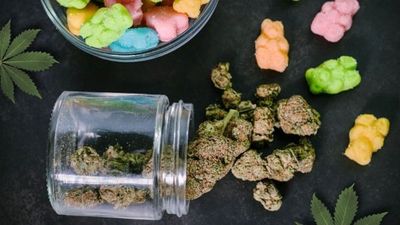A recent survey conducted on behalf of CAA South Central Ontario (CAA SCO) found that 82 per cent of parents in Ontario have witnessed dangerous driving behaviours in school zones – that’s a four per cent increase compared to last year. More than half (55 per cent) consider the roads around their child’s school to be unsafe.
“Our children deserve to travel to and from school safely,” says Tracy Marshall, manager of community relations at CAA SCO. “As another school year begins, drivers should prepare for higher traffic periods in school zones and drive with extra vigilance.”
According to the survey, some of the most common dangerous driving behaviours parents have witnessed include speeding, double parking and stopping in undesignated areas.
Of those surveyed, the car remains the primary mode of transportation to and from school. Because of this, more than 80 per cent of parents report experiencing congestion around their child’s school. In fact, survey respondents believe that parents in a hurry (38 per cent), too much congestion (33 per cent) and parents not following the drop off or pick up procedures contribute the most to unsafe driving behaviours in school zones.
Majority of parents say more can be done to help drivers slow down in school zones.
Ninety-one per cent of parents in Ontario support lowering the speed limit in school zones with 83 per cent that say speed limits should be 30km/h or lower.
When it comes to Automated Speed Enforcement (ASE):
- Seventy-seven per cent – an 11 per cent jump compared to last year – strongly support the use of it in school zones.
- Eighty-one per cent believe its presence would deter speeding around schools.
- Seventy-five per cent say that it should remain permanent in school zones.
Drivers reminded to follow the rules of the road in school zones, especially near school buses.
“It is dangerous and illegal to pass a stopped school bus with its red lights flashing and stop arm extended,” says Marshall.
According to the survey, 11 per cent of parents report having ever been charged with failure to stop for a school bus.
“Not only do you risk facing a fine of up to $2,000 and six demerit points for a first offense, but you are also putting the lives of others at risk,” adds Marshall.
How drivers can help keep school zones safe.
Drivers can also use the following CAA tips to ensure they are staying safe in school zones:
- Help reduce traffic with active school travel: Encourage your kids to walk or wheel to school to ease traffic congestion. If your school is a further distance, CAA encourages parents and guardians to park a block away and walk to school to reduce traffic and make school zones safer.
- Slow down: Know the speed limit in your neighbourhood’s school zones and respect them. Ensure you give yourself plenty of time to drop off your kids at school to avoid rushing.
- Choose a safe spot to drop off and pick up your children from school: Follow your school’s rules and avoid double parking or stopping on crosswalks, dropping off or picking up your kids on the opposite side of the street, and stopping in moving traffic as kids rush out. Instead, use the designated drop off areas or consider a spot a bit farther away from school that is easily accessible and safe.
- Make eye contact with pedestrians: With the excitement of going back to school, anticipate that children may not easily see or hear your moving vehicle, so ensure to make eye contact with pedestrians crossing the road.
- Watch for CAA School Safety Patrollers: When travelling to and from school, watch for CAA School Safety Patrollers in their lime green safety vests, as they play an important role in ensuring the roadway is safe before kids cross on their own.
CAA supports safety in school zones through the CAA School Safety Patrol® program, developed to protect and educate elementary school children on safe road-crossing practices. CAA’s Ontario Road Safety Resource is a toolkit with valuable lesson plans for teachers to help educate students about road safety.
To learn more please visit www.caasco.com/schoolzone.
About the survey.
The study, commissioned by CCG conducted by Dig Insights in May 2023 surveyed 1,560 Ontario parents/guardians between the ages of 18 and 74 with children attending school from kindergarten to grade 8. The margin of error for a sample of this size is plus or minus 2% at the 95% confidence level.





